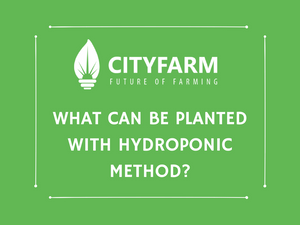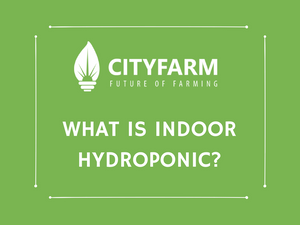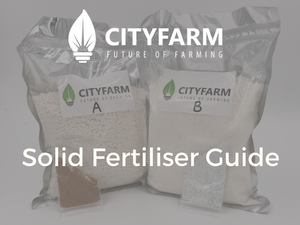Research, Articles, Design
![[Research] Effects of Airflow on Butterhead Lettuce](http://cityfarm.my/cdn/shop/articles/Open_Sans_Extra_Bold_32_2_1400x.png?v=1609230092)
[Research] Effects of Airflow on Butterhead Lettuce
Effects of Airflow on Butterhead Lettuce
Objectives
- To observe the effects of airflow on the butterhead lettuce.
- Determine the optimum airflow for butterhead lettuce
Introduction
The relationship between air and plants is very influential because they require carbon dioxide from the air to photosynthesize (produce food). Air movement also promotes transpiration in plants, it is a natural process in which the water travels through the plants and returns to the air. The two main functions are to decrease the temperature of the plants and deliver minerals to every part of the plants for photosynthesis (Brawner, n.d.). This is crucial to indoor farming because an enclosed space is not able to deliver natural adequate ventilation to the plants. In this case, indoor-grown butterhead lettuce usually experiences tip-burn on the inner leaves. Tip-burn is the result of deficiency of calcium, the development of necrosis on the young emerging leaves. This experiment was made to observe the effects of airflow on the butterhead lettuce and determine the volume of airflow to prevent the lettuce from getting tip-burn.
Materials
- City Vertical Farm M
- Butterhead lettuce seedlings ( 3 weeks old)
- 4ft LED T8 growlights
- Hydroponic fertilizers A and B
- pH down phosphoric acid
- Cooling fans
- Acrylic and plywood sheets
- Temperature and humidity meter
Method
This experiment was built based on the City Vertical Farm M, the 4ft NFT channels were isolated from each other using acrylic sheets to make four separated tunnels. Each tunnel was occupied with seven butterhead lettuce samples and supplied with two 4ft CityFarm Horticulture Full Spectrum LED T8 grow lights, the distance between the grow lights and the channels are 20 cm. The lighting duration was set to 12 hours in a day.


Figure 1. Photos of the modified system.
The tunnels were equipped with no fan, one fan, two fans, and three fans respectively, placing right below the grow lights at the beginning of the NFT channels. The cooling fan (12V) is 8cm long and 8cm wide, delivering 43 cubic feet per minute (CFM) or 1.22m3/ min. The fans were operating continuously for 28 days. The nutrient concentration was kept between the range of 1.3~ 1.5 mS/cm, under a pH of 6.0 ~ 6.9.

Results
Table 1: The average temperature and humidity of the four different channels.
|
|
Channel 1 |
Channel 2 |
Channel 3 |
Channel 4 |
|
Temperature (˚C) |
25.2 |
25.0 |
25.0 |
24.7 |
|
Humidity (%) |
55.6 |
54.8 |
55.5 |
56.1 |
Note. The temperature and humidity were recorded daily at 6 pm.
Table 2. The presence of tip-burn was observed during the experiment.
|
|
Sample 1 |
Sample 2 |
Sample 3 |
Sample 4 |
Sample 5 |
Sample 6 |
Sample 7 |
|
Channel 1 |
√ |
√ |
√ |
√ |
√ |
√ |
√ |
|
Channel 2 |
- |
√ |
- |
- |
- |
- |
√ |
|
Channel 3 |
- |
- |
- |
- |
- |
- |
- |
|
Channel 4 |
- |
- |
- |
- |
- |
- |
- |
Note. “√” indicates the presence of tip-burn on the butterhead lettuce samples; “-” indicates no presence of tip-burn observed. The cooling fans were located 7 inches from the first samples (sample 1), delivering air from the left (Sample 1) to the right (Sample 7).
Table 3. Weight of the Butterhead lettuce samples.
|
|
Sample 1 |
Sample 2 |
Sample 3 |
Sample 4 |
Sample 5 |
Sample 6 |
Sample 7 |
|
Channel 1 |
149g |
194g |
180g |
164g |
165g |
132g |
113g |
|
Channel 2 |
163g |
164g |
151g |
187g |
171g |
130g |
119g |
|
Channel 3 |
161g |
147g |
183g |
149g |
156g |
160g |
133g |
|
Channel 4 |
146g |
153g |
166g |
149g |
127g |
150g |
122g |
Note. The weight of the samples included the net pots and water content in the sponge.

Figure 3. Butterhead lettuce samples from Channel 1 (No fan)

Figure 4. Butterhead lettuce samples from Channel 2 (1 fan)

Figure 5. Butterhead lettuce samples from Channel 3 (2 fans).

Figure 6. Butterhead lettuce samples from Channel 4 (3 fans).
Discussion

The results were recorded on 17/11/2020. All of the samples in Channel 1 (C1) experienced tip-burn. Two out of the seven samples were experiencing tip-burn on Channel 2 (C2). There was no tip-burn observed from the samples of Channels 3 (C3) and 4 (C4). From the observations, the cooling fans were able to reduce the temperature and increase the humidity around the channels. Channels with the cooling fans (C2, C3, and C4) had slightly lower temperatures and higher humidity than the channel without any cooling fan (C1). However, the difference was not significant, the maximum difference is 0.5˚C and 1.3% of humidity. Hypothetically, the temperature decreases as the number of fans increases; the humidity percentage is directly proportional to the number of fans. But C3 with two fans had the same temperature as C2 with only one fan; C2 had lower humidity than C1 with no fans which did not match the hypothesis. The positions of the temperature and humidity meters in the channels or the defects of devices led to inaccurate readings.
Table 4. The Air Volume Flow of 4 different channels
|
Channels |
1 (No fan) |
2 ( 1 fan) |
3 ( Two fans) |
4 ( Three fans) |
|
Air volume flow rate in cubic feet per minute (CFM) |
0 CFM |
43 CFM |
86 CFM |
129 CFM |
Tip-burn on the butterhead lettuce sample is a sign of calcium deficiency, calcium is one of the minerals which deliver the top of the plants via the transpiration flow. The transpiration rate is affected by temperature and evapotranspiration (ET). The butterhead lettuce tends to undergo head formation in the center, where the head develops from the outer leaves to the inner leaves. The inner leaves had a lower transpiration rate than the outer leaves because they had limited access to the open air, which led to a deficiency in calcium, thus tip-burn occurred. The observations showed that high CFM of airflow in the channels increased the transpiration rate, so tip-burn was prevented. Further studies are required because the increased transpiration rate was assumed, and there were no results recorded on the transpiration rate. One cooling fan onwards, meaning 43 CFM or more than that greatly reduced the occurrence of tip-burn on the samples.
The air volume flow did not have a significant impact on the weight of the butterhead lettuce. However, all of the 7th samples which were located at the end of the channels were not able to form heads. The assumptions were the samples did not obtain sufficient light from the system or the samples did not obtain sufficient airflow from the beginning of the channels, causing the temperature to increase around the head forming center.


Figure 8. The Butterhead lettuce samples in the end of Channels 1 and 2. The samples failed head formation and slight tip-burn occurred.
Apart from that, the butterhead lettuce samples in channels with 2 fans (86 CFM) and 3 fans ( 129 CFM) had stunted growth during the first two weeks of the experiment. The samples’ height was maintained right below the cooling fans during that period, this might due to the overpowering airflow stressing the young samples. The samples from the channels with 1 fan ( 43 CFM) or without any fan did not experience any stunted growth.
Conclusion
From this experiment, the results showed that 43 CFM and above of airflow could reduce the occurrence of tip-burn on the butterhead lettuce. The temperature was reduced and the humidity was increased as the volume of airflow increases. This experiment is required to repeat for several times to obtain accurate results, further studies or experiments need to be done on the effects of airflow on the transpiration rate of the plants to support the hypothesis of this experiment. The cooling fans were operating for 28 days, I suggest to experiment regarding the duration of delivering optimum airflow to the plants in a day, which is important to commercial farms when it comes to electricity saving and efficiency.
References
Brawner, M., n.d. Transpiration And Why It Matters. [online] Harlequinsgardens.com. Available at: <https://harlequinsgardens.com/transpiration-and-why-it-matters/> [Accessed 20 December 2020].
- Jeffrey Chan
![[Research]Grow Light Experiment with Lollo Bionda](http://cityfarm.my/cdn/shop/articles/Open_Sans_Extra_Bold_32_1_1400x.png?v=1577970855)
[Research]Grow Light Experiment with Lollo Bionda
HORTICULTURE GROW LIGHT EXPERIMENT
I was assigned to conduct a light experiment for salad plants to observe and figure out the lights with best performance towards plant in terms of plant’s weight, height, number of leaves and appearance. There are 5 types of artificial lights will be used in this experiment.
The model of hydroponic farm system used is the Zig-zag Vertical Farm, there are 6 NFT channels in total, I am using only five of them. To ensure that the lights do not interfere with each other, the middle space is covered with polystyrene boards. The plants used in this experiment are Lollo Bionda, one type of coral salad. The seeds are germinated in sponge before used and been transplanted into the Zig-zag Vertical Farm at the age of 2 weeks old, they are germinated and transplanted at the exact same time to ensure the reliability of this experiment.
Aims:
- To figure out the best lights for plant growth out of the five lights been experimented.
- ‘different light wavelength’ and ‘light intensity’
Materials and methods:
- Lollo Bionda plantlets (2 weeks old, sponge as media),
- Zig-zag Vertical Farm,
- 5 types of lights,
- Hydroponic fertilizer as nutrients supply (been maintained within 600 to 700ppm throughout the experiment)

Figure 4: Zig-zag Vertical Farm (model of hydroponic system been used in this experiment)
Table 1: Information of lights in the experiment.
|
Light 1: Power:22W PPF: 35 μMol/s PPFD at 22cm: 95 μmol/m2/s LED quantity: 73pcs Length:1200mm LED: Purple |
Light 2: Power:18W PPF: - PPFD at 22cm: 70 μmol/m2/s LED quantity: 120pcs Length:1200mm LED: Red and Blue |
Light 3: Power:18W PPF: - PPFD at 22cm: 110 μmol/m2/s LED quantity: 96pcs Length:1200mm LED: Full Spectrum |
|
Light 4: Power:18W PPF: 32.4μMol/s PPFD at 22cm: 107 μmol/m2/s LED quantity: 120pcs Length:1200mm LED: Purple |
Light 5: Power:30W PPF: 66μMol/s PPFD at 22cm: 210 μmol/m2/s LED quantity: 175pcs Length:1100mm LED: Full spectrum |
|
RESULT
Week 1 - Data of light experiment.
Table 1: Wet weight of the plants, which weight of net pot is not included. (weight of net pot = 2.4g). The weighing machine was calibrated before used to remove the weight of net pot.
|
Lights |
Plant’s wet weight (g) |
Total weight gain (Week 5 – Week 1) |
||||
|
Week 1 |
Week 2 |
Week 3 |
Week 4 |
Week 5 |
||
|
1 |
8.67 |
10.52 |
15.95 |
27.95 |
47.00 |
38.33 |
|
2 |
9.93 |
12.30 |
18.40 |
33.50 |
59.22 |
49.29 |
|
3 |
8.33 |
10.00 |
15.63 |
29.90 |
58.68 |
50.35 |
|
4 |
8.27 |
10.98 |
17.87 |
34.65 |
63.02 |
54.75 |
|
5 |
7.90 |
11.53 |
25.07 |
59.05 |
115.37 |
107.47 |
Table 2: Height of the plant, only parts above the germination sponge are measured.
|
Lights |
Plant’s height (cm) |
Total height gain (Week 5 – Week 1) |
||||
|
Week 1 |
Week 2 |
Week 3 |
Week 4 |
Week 5 |
||
|
1 |
7.55 |
10.80 |
14.92 |
19.12 |
23.30 |
15.75 |
|
2 |
7.70 |
9.62 |
13.95 |
18.73 |
23.15 |
15.45 |
|
3 |
7.05 |
9.60 |
13.00 |
17.02 |
21.17 |
14.12 |
|
4 |
7.97 |
10.18 |
13.92 |
18.90 |
23.85 |
15.88 |
|
5 |
7.78 |
8.88 |
12.75 |
17.42 |
20.43 |
12.65 |
Table 3: Number of leaves.
|
Lights |
Number of Leaves |
Total leaves gain (Week 5 – Week 1) |
||||
|
Week 1 |
Week 2 |
Week 3 |
Week 4 |
Week 5 |
||
|
1 |
5.12 |
7.3 |
8.67 |
10.33 |
14.83 |
9.71 |
|
2 |
5.00 |
6.83 |
9.50 |
10.50 |
14.17 |
9.17 |
|
3 |
5.00 |
6.83 |
9.50 |
10.50 |
14.83 |
9.83 |
|
4 |
5.00 |
6.83 |
9.83 |
10.67 |
15.00 |
10 |
|
5 |
5.00 |
7.17 |
9.17 |
11.83 |
18.33 |
13.33 |


Overall observation of plants’ appearance:
Light 1- Lengthy stems, slim leaves with scattering pattern.
Light 2- Lengthy stems, leaves broader than plants under light 1, scattering leaves.
Light 3- Lengthy stems, slim leaves with scattering pattern, similar appearance with plants under light 2.
Light 4- Lengthy stems, slim leaves with scattering pattern, heavier wet weight compared to row 1,2 and 3.
Light 5- Broad leaves, bushy, with heaviest weight and has highest amount of leaves compared
to plants under other lights.
Weight comparison:
Figure 15: weight comparison graph for plants under different lights over 5 weeks.
Height comparison:
Figure 16: height comparison graph for plants under different lights over 5 weeks.
Number of leaves comparison:
Figure 17: number of leaves comparison graph for plants under different lights over 5 week
Table 17: General view on the Lollo Bionda in the experiment under different lights.


DISCUSSION
Plants under light 5 has the most satisfying output which has heaviest weight, moderate height and highest number of leaves compared to others. Light 5 illustrate the best performances among the lights been tested, which suggested that full spectrum light might be more suitable in supporting overall plant growth.
Light 3 which is full spectrum as well do not perform the same as light 5 might because of the strength of power.
Plants under light 1, 2 and 4 (purple or red and blue lights) shows a similar symptom which is elongated stem, this might due to the effect of red light, which support stem elongation process or low intensity of light due to low power output of the lights. Besides, a high relative content of blue light could reduce the plant leaf area, this explained the slim leaves appearances in the plants under light 1,2 and 4. These observations suggested that red and blue light has moderate or undesirable effects on lettuce growth such as elongated stem and slim leaves.
Suggestions or recommendation:
- Use lights with same power output to eliminate the effect brings by other factor such as light intensity.
- Carry out this experiment in dark environment which do not get affected by other light sources.
CONCLUSION
Full spectrum light is suggested to be the most suitable light source for plant growth based on the performance on plant’s weight, height and appearance. Light 3 and 5 are both full spectrum the differences showed in their performance might due to the difference in power output.
- Xin Wei Lee
![[Research] Effects of DLI on the Growth of Lollo Bionda(Coral Lettuce)](http://cityfarm.my/cdn/shop/articles/DLI_RESEARCH_ON_LOLLO_BIONDA_1400x.png?v=1577512785)
[Research] Effects of DLI on the Growth of Lollo Bionda(Coral Lettuce)
Effects of DLI on the Growth of Lollo Bionda
Daily Light Interval (DLI) is the rate of photosynthetically active radiation delivered to a square meter region (m2) in a day, expressed in the unit of mol·m-2·d-1. It is a measurement of the light environment which is vital for the light requirement in plant growth. An experiment was conducted to test the effect of DLI on the growth of Lollo Bionda in 6.5, 10, 18 and 23 mol·m-2·d-1.
Type of plant: Lollo Bionda
Light distance from plant: 25 cm
Lighting duration per day: 16 hours
Procedure:
System Setup
- Different number of grow lights were built on the four NFT channels of City Vertical Farm M (Indoor NFT System) to perform different DLI. Grow lights were installed in the amount of 1, 2, 3 and 4 on different row of NFT channels accordingly.
|
NFT Channel |
1 |
2 |
3 |
4 |
|
Number of LED grow light |
1 |
2 |
3 |
4 |
|
DLI (mol·m−2·d−1) |
6.5 |
10 |
18 |
23 |
Plants Germination and Growth
- The seeds were soaked in a film of water for two days.
- After two days, the germination seeds were transferred to the wet germination sponge for further growth development.
- After two weeks, 24 seedlings about 5 cm were transplanted to the system under different number of grow lights for an observation for 28 days.
- Initial and final weight of every plants were measured for comparison. Number of leaves per plant and their appearance were observed and recorded every week.
Observation:
DAT 7. Lollo bionda in Channel 1 was obviously having lesser leaves when compared to the other three initially. In terms of comparison between the heights, Lollo bionda in Channel 4 was shorter than the others.

DAT 14. The condition continued on Lollo Bionda in Channel 1 to have lesser amount of leaves and smaller leaves’ surface. They also had longger leaves than others. Tip burn started to occur at the new leaves of Lollo Bionda in Channel 3 and 4.
DAT 21. New leaves on Lollo Bionda in Channel 4 had the most tip burn problem, followed by Channel 3 and least tip burn problem in Channel 2. However, their leaves were rigid and compact as more leaves were grown. There was no tip burn problem in Channel 1, however the leaves were soft, loosely grown and longer than the plants in other channels.
DAT 28. In comparison for the root part, Lollo Bionda in Channel 4 had the most amount of roots and most compact among the plants in other channels. In the overall, Lollo bionda in Channel 1 has the least amount of leaves and roots, but no tip burn problem occurred. Lollo Bionda in Channel 2, 3 and 4 were all detected to have tip burn on their old and new leaves.
Result:
Average Weight per Plants
|
Channel |
1 |
2 |
3 |
4 |
|
Daily Light Interval (mol·m−2·d−1) |
6.5 |
10 |
18 |
23 |
|
Average Initial Weight per Plant, g |
1.63 |
1.18 |
1.37 |
1.30 |
|
Average Final Weight per Plant, g |
66.32 |
123.35 |
151.48 |
138.18 |

Average Number of Leaves per Plants
All of the Lollo Bionda initially started with four leaves per plant. The difference on average leaves per plant started on DAT 14 when Lollo Bionda on Channel 2 had the highest average number of leaves (9.67) while Channel 4 had the lowest number (7). At the end of the experiment, Lollo Bionda on Channel 2 and 3 had about the same average number of leaves (20 and 20.5) while Channel 1 and 4 had the same lowest average number (15.67). Lollo Bionda on Channel 4 experienced stunted growth on leaves on DAT 7 to DAT 21. However, the data shows that the average number of all plants increased up to 6-7 leaves per plants after DAT 21 including Channel 4 which increased from 8.17 to 15.67.
Discussion
Plants under DLI 10 mol·m−2·d−1 and 18 mol·m−2·d−1 produced more leaves then 6.5 mol·m−2·d−1 and 23 mol·m−2·d−1. However, DLI 18 mol·m−2·d−1 and 23 mol·m−2·d−1 will produce more weight per plant. According to Faust et al. (2005), low DLI results in reduced water stress due to low transpiration which will lead to taller plants as what happened to Lollo Bionda in Channel 1 on DAT 7 and 14. Reduction in water stress will also produce softer leaves as they have higher percentage of water above the ground tissues. Eventually, the plant growth and their quality will be affected under low DLI as shown in the average number of leaves and weight gained on the Lollo Bionda in Channel 1.
As the DLI increased, plant tissues will produce higher proportion of structural materials and carbohydrates. Hence, the leaves under high DLI are more compact and rigid, which might also produce good texture in the salad dishes. However, high DLI will bring bad effect on the plant growth as shown in Lollo Bionda in Channel 4. When the DLI is high, plant will undergo rapid growth due to the increase in light energy. It will eventually lead to the calcium supply being unable to keep up with the plants growing demand. Once the symptom occurs, it is not reversible (Mattson, 2015).
There was serious tip burn problem happened on the new leaves on Channel 2, 3 and 4 while old leaves on all channels. New leaves tip burn occurs due to the poor calcium supply to the leaves. It is not because of low calcium content in the nutrient water but due to the cause of environment affecting the transpiration in plant. Such conditions include high humidity, poor air movement and poor root development. Calcium is important as the compartment of cell tissues for cell division. Low calcium supply will cause necrosis on the tip of new leaves. Despite of new leaves, the tip burn problem of old leaves is not clear enough as there might have multiple causes. It might be due to high salt accumulating (Mattson, 2015), which damage the old leaves’ cell under TDS 750 ppm of nutrient water. Thus, all Lollo Bionda in the experiment had the condition of old leaves tip burn.

DAT 21. Tip burn happened on new leaves in Channel 4 (DLI: 23 mol·m−2·d−1).

DAT 28. Tip burn happened on old leaves in Channel 2 (DLI: 10 mol·m−2·d−1).
Conclusion
Lollo Bionda grows better within the DLI range between 10 mol·m−2·d−1 to 18 mol·m−2·d−1 as more leaves produced around 20 leaves and more weight gained around 130 g. Low DLI will cause the reduction in water stress on plant while high DLI will cause tip burn of the leaves which will both affect the growth quality of plants. Instead of high DLI, the problem of tip burns on the plant leaves could also be solved by improving the air movement around the crops to improve transpiration for calcium uptake.
Reference
Faust, J.E., Holcombe, V., Rajapakse, N.C. and Layne, D.R., 2005. The effect of daily light intervals on bedding plant growth and flowering. Hort Science, 40(3), pp. 645-649.
Mattson, N.S., 2015. Tipburn of hydroponic lettuce. E-Gro Alert, 4(31), pp. 1-7.
- Colin Kiu

What Can be Planted with Hydroponic Method?
Three type of plants that can be planted with hydroponic method- WEI HUANG
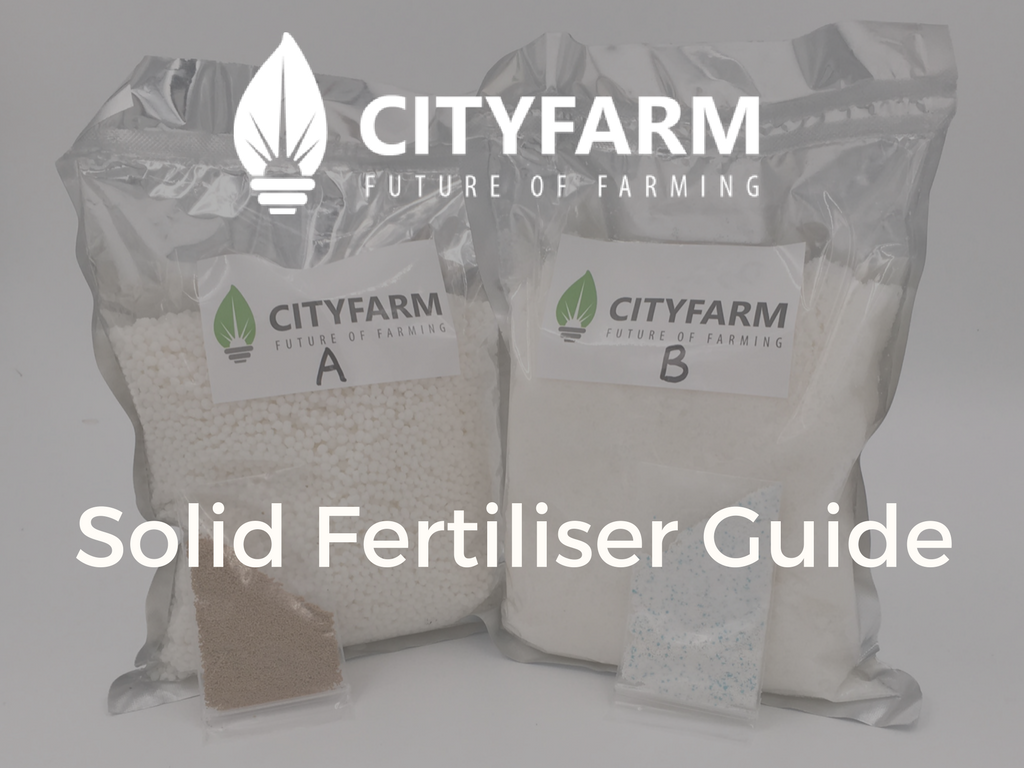
Solid Fertiliser Guide
1 liter of fertiliser is not enough to feed your plants? We have just the right thing for you! Get your share of our Solid Fertiliser and it's very easy to mix! Just follow these guidelines we've prepared: BUY NOW- Shirley Goh









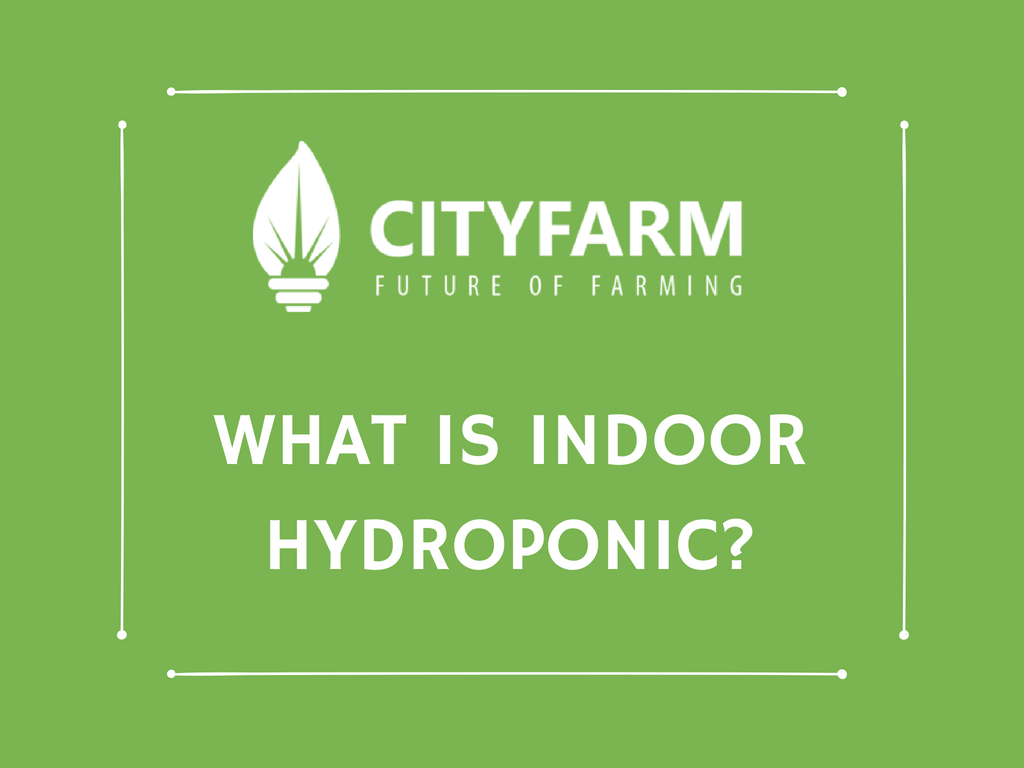
![[Research] Effects of Airflow on Butterhead Lettuce](http://cityfarm.my/cdn/shop/articles/Open_Sans_Extra_Bold_32_2_300x.png?v=1609230092)
![[Research]Grow Light Experiment with Lollo Bionda](http://cityfarm.my/cdn/shop/articles/Open_Sans_Extra_Bold_32_1_300x.png?v=1577970855)
![[Research] Effects of DLI on the Growth of Lollo Bionda(Coral Lettuce)](http://cityfarm.my/cdn/shop/articles/DLI_RESEARCH_ON_LOLLO_BIONDA_300x.png?v=1577512785)
